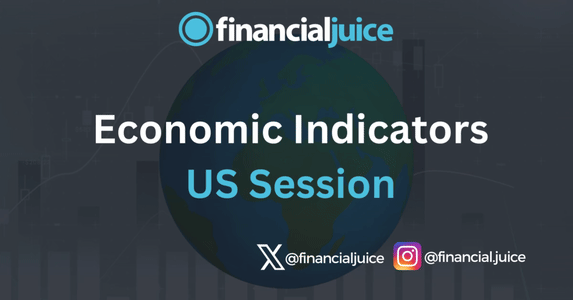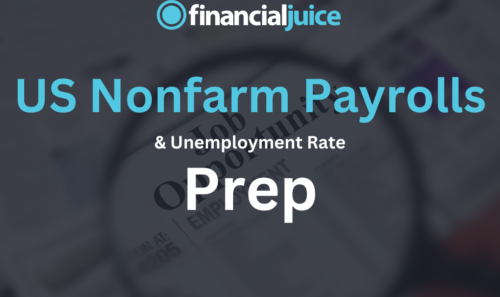
Week Ahead: Economic Indicators (US)
Tuesday 1st October
09:45 ET
US S&P Manufacturing PMI September Final
The US S&P Manufacturing PMI is a monthly economic indicators compiled by S&P Global that measure the activity levels in the manufacturing sector.
As a diffusion index, a reading above 50 indicates expansion, while below 50 signals contraction.
Assesses the performance of the manufacturing sector by surveying purchasing managers about new orders, production, employment, supplier delivery times, and inventory levels.
What to Expect
In the current economic situation, it is difficult to say what the markets will be paying attention to, due to volatile/mixed reactions to data points throughout the last month.
For the headline Manufacturing PMI, a higher-than-expected number could either show upside inflation risks, or a strong and resilient manufacturing sector, depending on the magnitude of the deviation.
This could cause either strength in the dollar and bond yields, with weakness in US stocks, or strength across the US assets (dollar, bond yields, and stocks).
The opposite could be seen if the number is lower then expected.
However, with employment in focus at the moment, I expect more attention will be paid to the employment component of this report.
If the employment situation is seen as stronger than expected in the manufacturing sector, I would expect to see strength across US assets (dollar, stocks, and bond yields), and the opposite if it is seen as weaker.
10:00 ET
US ISM Manufacturing PMI for September
The US Institute for Supply Management Manufacturing Purchasing Managers’ Index is a monthly economic indicator that measures the activity level in the US manufacturing sector.
Based on surveys of purchasing managers across various manufacturing industries, the index covers key areas such as new orders, production, employment, supplier deliveries, and inventories.
As a diffusion index, a reading above 50 indicates expansion in the manufacturing sector, while a reading below 50 signals contraction.
What to Expect
In the current economic situation, it is difficult to say what the markets will be paying attention to, due to volatile/mixed reactions to data points throughout the last month.
For the headline Manufacturing PMI, a higher-than-expected number could either show upside inflation risks, or a strong and resilient manufacturing sector, depending on the magnitude of the deviation.
This could cause either strength in the dollar and bond yields, with weakness in US stocks, or strength across the US assets (dollar, bond yields, and stocks).
The opposite could be seen if the number is lower then expected.
However, with employment in focus at the moment, I expect more attention will be paid to the employment component of this report.
If the employment situation is seen as stronger than expected in the manufacturing sector, I would expect to see strength across US assets (dollar, stocks, and bond yields), and the opposite if it is seen as weaker.
US JOLTS Job Openings for August
US Job Openings and Labor Turnover Survey is a monthly report released by the Bureau of Labor Statistics (BLS) that provides data on the number of job openings, hires, quits, layoffs, and other separations in the United States.
It measures the demand for labor, offering insights into the labor market’s strength.
A high number of job openings indicates a strong demand for workers and a healthy job market, while a decline may suggest weakening demand.
What to Expect
A higher-than-expected job opening number, indicating good demand for labor, would likely cause strength across US assets (stocks, dollar, and bond yields), as it would reduce fears of a broader economic slowdown.
A lower-than-expected job openings number would likely do the opposite, as it instills further fears of a broader economic slowdown.
Wednesday 2nd October
08:15 ET
US ADP Employment Change for September
The US ADP Employment Change is a monthly report released by the ADP Research Institute that estimates the change in non-farm private sector employment in the United States.
It is based on payroll data from approximately 460,000 US businesses.
The report provides an early snapshot of the labor market ahead of the more comprehensive official employment report by the Bureau of Labor Statistics (BLS).
An increase in ADP employment change suggests job growth and economic expansion, while a decrease may indicate weakening labor market conditions.
What to Expect
With employment in focus at the moment, as the Fed focuses on the employment side of its mandate, higher-than-expected ADP numbers, indicating a stronger jobs market, would likely reduce fears of a larger slowdown, increase chances for a soft landing, and cause potential strength in US stocks and the dollar.
The opposite would be true if it came in lower than expected, as this would increase fears of a larger slowdown, reduce chances for a soft landing, and cause potential weakness in US stocks and the dollar.
10:30 ET
US Weekly EIA Crude Oil Inventories
The US Weekly EIA Crude Oil Inventories report, released by the Energy Information Administration every Wednesday, provides data on the amount of crude oil stored in the United States.
This report helps to assess the balance between supply and demand in the oil market.
What to Expect
An increase in inventories suggests a surplus, which can lead to lower oil prices, while a decrease indicates a deficit, potentially driving prices up.
Thursday 3rd October
09:45 ET
US S&P Services PMI September Final
The US S&P Services PMI is a monthly economic indicator produced by S&P Global that measures the performance of the US services sector.
It is based on surveys of business executives in service industries, covering factors like business activity, new orders, employment, and prices.
As a diffusion index, a reading above 50 indicates expansion, while a reading below 50 signals contraction.
What to Expect
The markets will be balancing between reacting to the data’s effect on monetary policy, and its effect on the broader economy, though we expect a higher number could be seen as an upside risk to inflation, as the service sector has been noted as an inflationary headwind by FOMC officials.
This means a higher-than-expected services PMI could cause weakness in US stocks, and strength in the dollar and government bond yields, and the inverse could cause strength in stocks and weakness in the dollar and government bond yields.
Keep in mind that mixed messages throughout the report, especially in reference to the employment situation, could cause volatility in the market’s reaction to this data.
10:00 ET
US ISM Services PMI for September
The US ISM Services PMI is a monthly index released by the Institute for Supply Management that measures the economic activity of the US services sector, which includes industries like finance, healthcare, and retail.
It is based on surveys of purchasing managers and covers key factors like business activity, new orders, employment, and supplier deliveries.
As a diffusion index, a reading above 50 indicates expansion in the services sector, while a reading below 50 signals contraction.
What to Expect
Markets tend to take note of this release, as the ISM participants in the survey make up some of the largest US companies in their sector, invited based on their contribution to US GDP.
With employment in focus at the moment, we expect the markets will be paying attention to the Employment Index component in this report for any clues on the US jobs market.
Lower-than-expected employment would be likely to cause weakness across the US assets (dollar, stocks, and bond yields) while stronger employment could cause the inverse.
As for the headline Services PMI number, the markets will be balancing between reacting to the data’s effect on monetary policy, and its effect on the broader economy, though we expect a higher number could be seen as an upside risk to inflation, as the service sector has been noted as an inflationary headwind by FOMC officials.
This means a higher-than-expected services PMI could cause weakness in US stocks, and strength in the dollar and government bond yields, and the inverse could cause strength in stocks and weakness in the dollar and government bond yields.
Keep in mind that mixed data across the report in its totality could cause volatility in the market’s reaction to this data.
US Durable Goods August Final
US Durable Goods refers to a monthly report released by the Census Bureau that tracks orders for long-lasting manufactured goods, such as cars, appliances, and machinery, which are expected to last three years or more.
It provides insights into manufacturing activity and consumer/business demand for high-cost items.
What to Expect
This release has not seen a meaningful market reaction in a while, and we expect more attention will be paid to the ISM Services report, which is released simultaneously.
That said, a rise in durable goods orders suggests economic growth and confidence which could cause strength across the US assets (stocks, dollar, and bond yields), while a decline may indicate a slowdown, which could cause weakness across US assets.
Friday 4th October
08:30 ET
US Employment Situation for September
US Nonfarm Payrolls
US Nonfarm Payrolls, commonly referred to as NFP, is a key economic indicator published by the Bureau of Labor Statistics on a monthly basis.
It represents the total number of paid workers in the US, excluding farm employees, government workers, and non-profit organization employees.
The NFP report provides insights into the overall health of the labor market, reflecting changes in employment levels.
The data is closely watched by policymakers, economists, and investors for its impact on financial markets and economic policy decisions.
US Unemployment Rate
The US Unemployment Rate is a widely tracked economic indicator that measures the percentage of the labor force that is unemployed and actively seeking employment.
It is calculated by dividing the number of unemployed individuals by the total labor force.
The Unemployment Rate can differ from the Nonfarm Payrolls data due to differences in their definitions and methods of measurement.
While NFP represents the total number of paid workers in the US, excluding certain categories like farm and government employees, the Unemployment Rate considers the percentage of the labor force that is actively seeking but unable to find employment and is conducted via household surveys as opposed to payrolls data.
US Average Earnings YoY
US Average Earnings Year-over-Year is an economic indicator that measures the annual percentage change in the average earnings of all non-farm employees in the United States.
Average earnings include wages and salaries, and the YoY comparison helps assess the rate of change in workers’ compensation over a one-year period.
Positive growth in Average Earnings YoY is indicative of increasing income levels, while negative growth suggests a decline in average earnings. This data point gives insights into wage trends and their implications for consumer spending and inflation.
What to Expect
The US nonfarm payrolls is the most highly monitored employment indicator by both traders and policymakers.
Employment has been in focus since the last Nonfarm Payrolls report on August 2nd, which showed an unexpected weakening in the labor market, and prompted FOMC officials to pay greater attention to the employment situation.
Since then, markets have been reacting to employment reports for their effect on the broader economy, as opposed to its impact on monetary policy.
With that being said, if Nonfarm Payrolls comes in higher than expected, and the Unemployment Rate comes in lower than expected, there would likely be strength across the US assets (US stocks, dollar, and government bond yields) as it decreases the likelihood of recession/broader economic slowdown, increasing the chances for a soft landing.
If NFP comes in lower than expected, and the Unemployment Rate comes in higher than expected, We would expect weakness across the US stocks, dollar, and government bond yields.
This would solidify the bets of a broader economic slowdown, which increases the chances of a hard landing/recession and would prompt the Fed to move faster and harder in terms of policy response to react to the slowdown in the jobs market.
Keep in mind that the markets will be balancing between the data’s effect on the future of monetary policy, and its effects on the broader economy, which can cause variations/volatility in the reactions.





